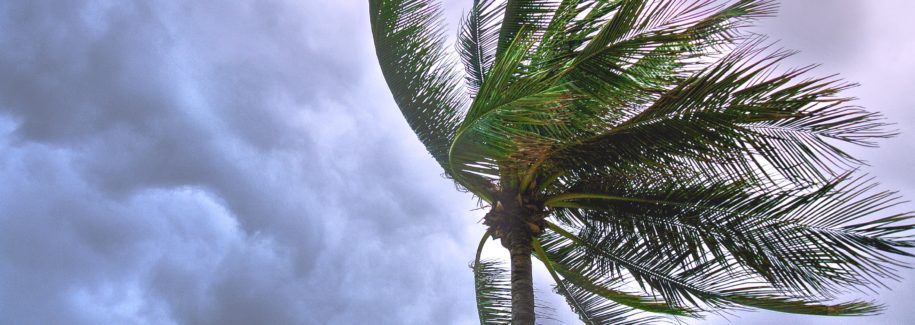Here in Florida, hurricane season starts on June 1 and runs until November 30th each year. According to the National Hurricane Center, the majority of dangerous storms hit during peak hurricane season which falls between August and October. You may already know how to prepare your home to withstand torrential wind and rain, but do you know how to protect your AC from hurricane damage?Â
Here are 7 ways to ensure that your air conditioner will continue keeping your family cool long after the storm has passed.Â
How to Protect Your AC From Hurricane Damage (7 Steps)Â
Before the Storm
Step 1: Start With a Well Maintained Unit
You can protect your AC from hurricane damage by starting with a good maintenance plan. A good plan calls for a comprehensive check on your entire AC system every three to six months. If it’s been a while since you’ve had your unit inspected, you should call an experienced contractor to assess your AC for any potential problems which could be made worse by extreme weather such as loose electrical connections or dirt covering the condenser.
This would also be a good time to install an HVAC surge protector if you haven’t done so already. HVAC surge protectors were not common in the past decade because old HVAC systems had minimal electronic parts and were mostly mechanical in nature. (1) However, the more modern systems we have today have a plethora of electronic components that need to be protected against the sudden electrical surges caused by lightning strikes.Â
If you live in a flood zone, your HVAC professional can also tell you if you should elevate your unit to protect it against water damage.
Step 2: Secure any loose items in your yard
Walk around your property and secure any loose items such as lawn furniture, plants, bikes, and sports equipment that could become dangerous projectiles in high winds and damage your outdoor unit. You will also want to clear away any shrubbery that is within 3 ft of your air conditioner to reduce the likelihood of debris entering the system. This will also make it easier for a technician to make any repairs after the storm if necessary.Â
Step 3: Lower Your Thermostat
Once you are under a hurricane watch or warning, you should lower your thermostat a few degrees and close your blinds, drapes and interior doors. In the event of a power outage, this will help your home maintain a comfortable temperature until power can be restored.Â
During the Storm
Step 3: Turn off the Electricity to Your Air Conditioner
In times of severe weather, Trane recommends you turn off the power to your AC unit from your thermostat and circuit breaker. Not only can lightning cause an electrical surge that could damage your air conditioner but flying debris could also lodge itself in your outdoor unit, causing the motor to burn out. If you have a window unit, you should unplug it from the wall. Window units can become projectiles in high winds, so you may want to completely remove them from the wall and then reinstall it once the storm has passed.Â
Step 4: Cover Your Outdoor Unit
Intense wind gusts can topple trees and break branches that could damage your AC unit if they land on it. A tarp will protect your unit from smaller branches but if you have large trees in your yard, you may want to consider covering your HVAC unit with plywood. Make sure you have turned off the electricity to your unit before covering it! You’ll want to remove the covering as soon as it is safe to do so since any type of covering will eventually trap moisture and encourage the growth of mildew and mold. If possible, instead of a tarp, consider using a custom cover made from breathable fabric which may be available from the manufacturer.
Step 5: Secure Your Unit With Hurricane Straps
If your home has more than one story and you have an elevated air conditioner, you may want to consider securing it against powerful storm wind gusts with hurricane straps. Make sure the electricity to your unit is turned off before attempting to secure it.Â
After the Storm Has Passed
Step 6: Inspect Your AC Unit For Storm Damage
Before turning your air conditioning system back on, it’s very important to inspect the unit for any possible storm damage. Electrical connections compromised by high winds and rain could start a fire and fluid leaking from your air conditioner could be refrigerant, which is toxic. If left unchecked, other problems caused by debris hitting your unit or water having entered the system could worsen over time. One of our licensed technicians would be happy to conduct a complete inspection of your HVAC system and alert you to any concerns about the safety of your unit.Â
In the weeks following a storm, you’ll also want to watch for any of the following signs of damage:
- Strange noises
- Warm air coming from your vents
- Spike in your electric bill
- Strange odors coming from your vents
- Dripping water is creating puddles
- Electric breaker keeps tripping
All of us at Gator Air & Energy wish you and your family a safe storm season!
References
- http://ac-engs.com/blog/surge-protectors-and-hvac-what-you-need-to-know/





